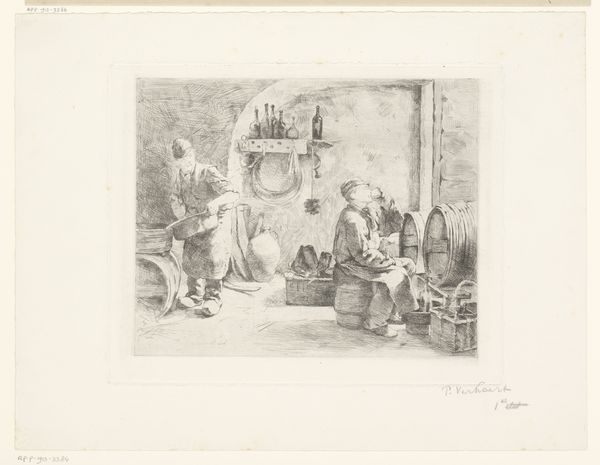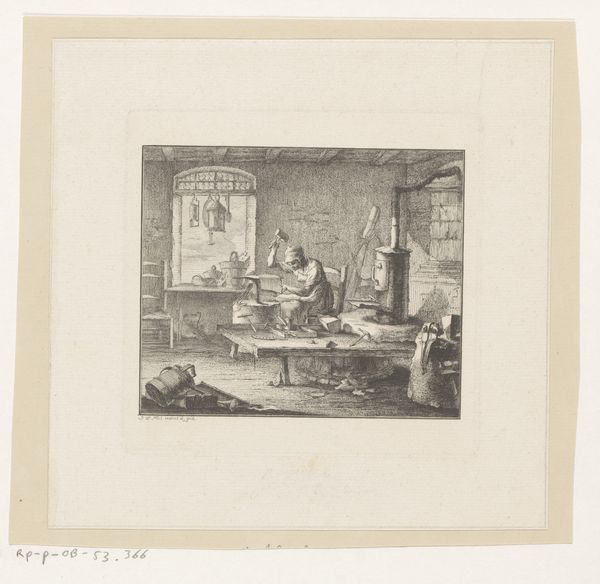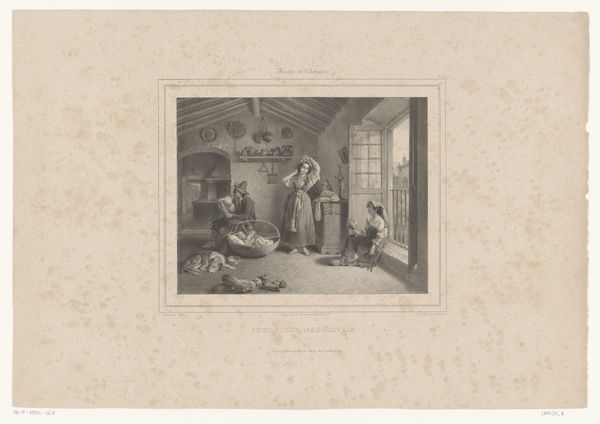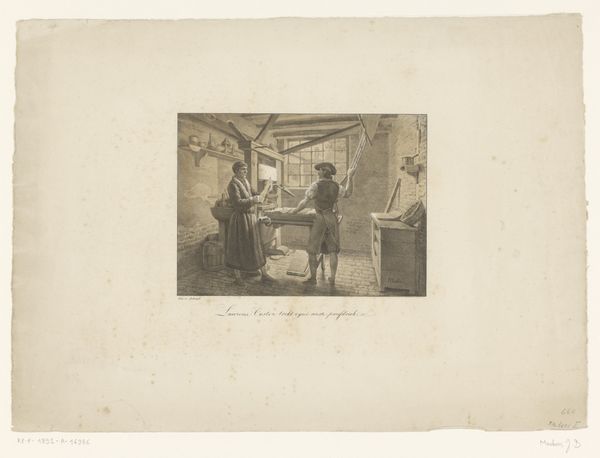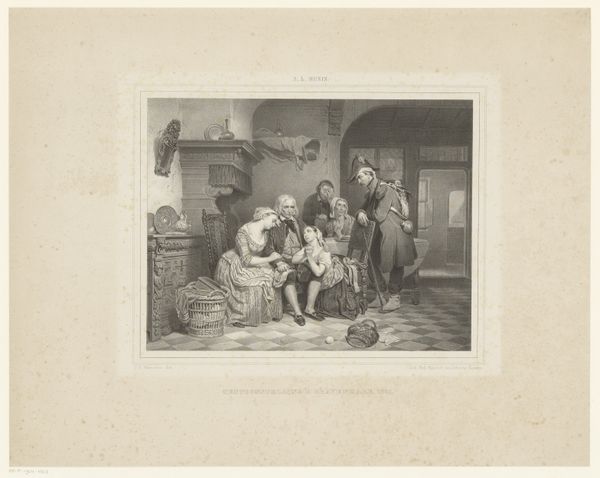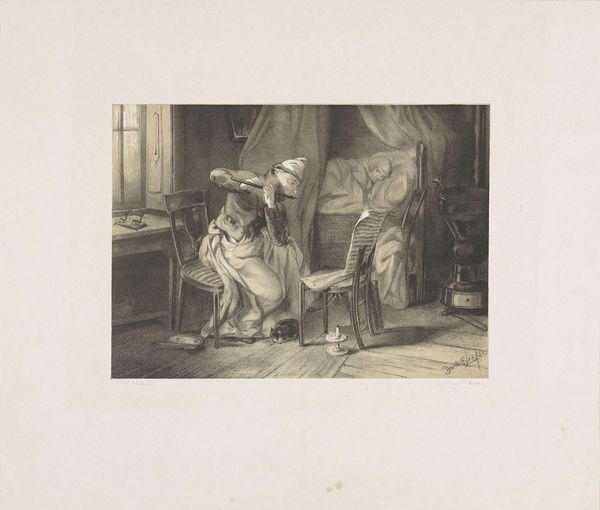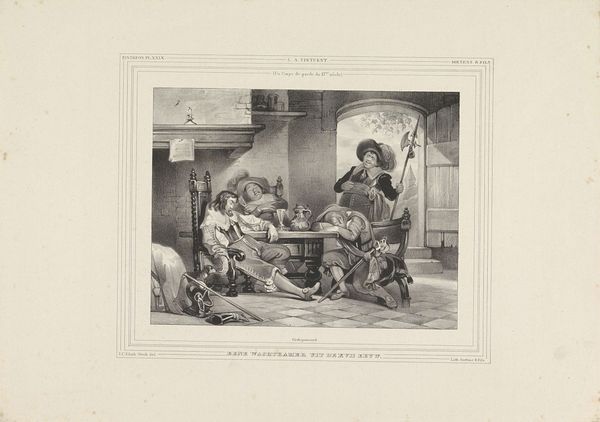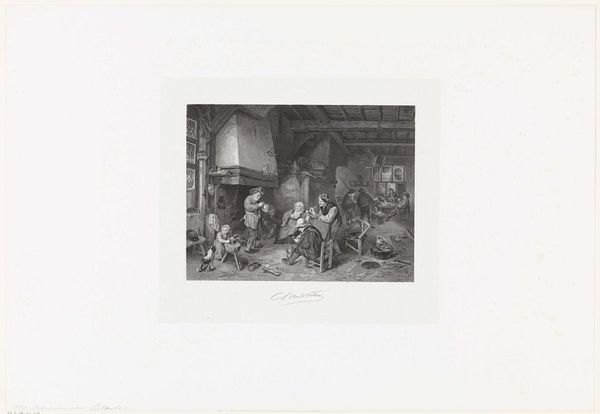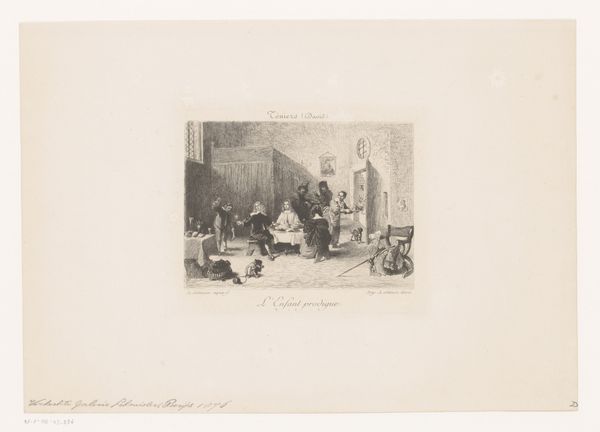
print, etching
#
dutch-golden-age
# print
#
etching
#
genre-painting
#
realism
Dimensions: height 285 mm, width 375 mm
Copyright: Rijks Museum: Open Domain
This print, "Hollandse keuken in de zeventiende eeuw," was made by Emrik & Binger sometime in the 19th century using a technique called lithography. Lithography is a printmaking process that relies on the subtle interaction between grease and water. The artist draws on a flat stone or metal plate with a greasy crayon, then applies water. The water adheres only to the non-greasy areas, and when ink is rolled over the surface, it sticks only to the greasy drawing. This inked image can then be transferred to paper. Lithography, which was invented in the late 18th century, democratized printmaking, allowing for relatively quick and inexpensive reproduction of images. The fine lines and tonal range of this particular print speak to the process's capacity to mimic the look of a drawing. Though this print simulates a scene of 17th century life, its own making is entwined with the rise of industrial production and visual culture of the 19th century. Appreciating the labor of the lithographer, along with the scene depicted, gives us a fuller sense of the print's place in history.
Comments
No comments
Be the first to comment and join the conversation on the ultimate creative platform.

